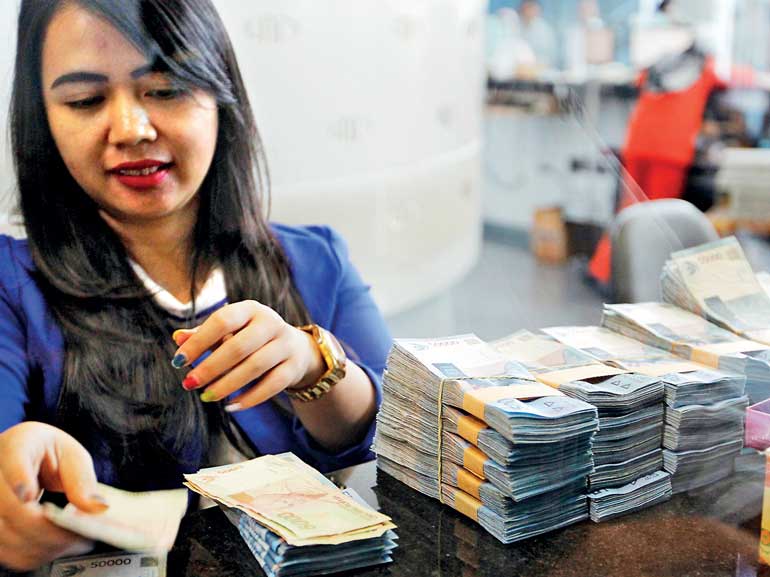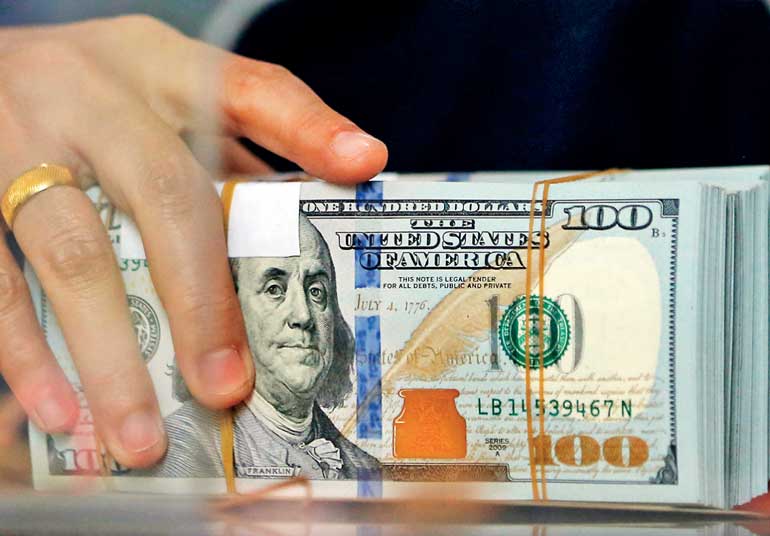Friday Jan 09, 2026
Friday Jan 09, 2026
Friday, 9 February 2018 00:00 - - {{hitsCtrl.values.hits}}


Reuters: Investors trimmed their long positions in most emerging Asian currencies in the last two weeks, a Reuters poll showed, as rising Treasury yields helped the dollar rebound from a three-year low touched in late January.
There has been a steady climb in US yields over the past two weeks on expectations the European Central Bank will tighten monetary policy, and on increasing worries that inflation is accelerating due to bigger paychecks.
The benchmark 10-year yields rose to a four-year high of 2.88%, with traders adding to their positions for a faster pace of rate hikes, lending support to the dollar.
Among Asian currencies, bullish bets on the Chinese yuan dipped for the first time since December, while that on the Malaysian ringgit touched their lowest since November.
Long positions on the Singapore dollar and the Taiwan dollar reached a near two-month low, according to the poll of 12 analysts, traders and fund managers.
Investors, however, turned more bearish on the Philippine peso, with short positions at their highest since November.
The peso has been the weakest in Asia against the dollar so far this year, shedding 2.8%, with vulnerability to capital outflows seen increasing due to deficit concerns.
The Philippine central bank projects there was a current account deficit of $100 million last year, the first since 2002, and it forecasts a deficit of $700 million this year.
Bullish bets on the Korean won were trimmed to five-month lows, while positions on Indonesian rupiah IDR= went from long to nearly neutral.
The won has lost about 1.6% so far this year, making it the second weakest currency in the region after the peso.
Bullish sentiment towards the Thai baht weakened slightly, while the Indian rupee, which has slid about 0.5% so far this year, saw bullish bets at their lowest since January 2017.
“The more neutral positioning on the rupee reflects the Indian markets’ heightened unease about the government’s fiscal path, triggered by its budget last week, which has led to higher inflation expectations,” said Reuters FX analyst Krishna Kumar.
The poll was conducted between Tuesday and Wednesday, with the bulk of the responses coming in by Wednesday.
The Asian currency positioning poll is focused on what analysts and fund managers believe are the current market positions in nine Asian emerging market currencies: the Chinese yuan, South Korean won, Singapore dollar, Indonesian rupiah, Taiwan dollar, Indian rupee, Philippine peso, Malaysian ringgit and the Thai baht.
The poll uses estimates of net long or short positions on a scale of minus 3 to plus 3. A score of plus 3 indicates the market is significantly long on US dollars.
The figures include positions held through non-deliverable forwards (NDFs).
BENGALURU (Reuters): The battered US dollar is unlikely to rebound this year, even though the Federal Reserve is expected raise interest rates at least three times, according to a Reuters poll of strategists, who aren’t expecting any major moves either.
Rising US wage inflation and expectations for an end to European Central Bank stimulus hit bond markets and nudged US Treasury yields up to four-year highs last week, leading to the worst sell-off in stock markets in six years.
Although bond yields have pulled back from those peaks, they remain elevated and are not expected to return to previous lows. But the rout across world stocks had only a muted effect on currencies, leaving the weak dollar trend intact.
“I think this is actually a very interesting time for the dollar because we have yields potentially pushing higher in the US, which should be dollar-positive and also if there is a re-assessment of risks ... then there could be additional demand for dollars,” said Jane Foley, senior FX strategist at Rabobank.
“At the moment, we probably have a correction in equity markets and not a broad-based rout and re-assessment of risk ... what we have is a slightly bolstered view on the US dollar versus some of the crosses, but I don’t think we are going to see a big increase in demand for the dollar.”
The latest poll of nearly 70 foreign exchange analysts showed the dollar, which turned in its worst performance for the month of January in 30 years, is forecast to weaken slightly against most major currencies over the coming year.
The dollar index is forecast to end this year at 88.7, compared with 89.9 on Wednesday.
“No change to our medium-term bearish dollar view,” noted Citi’s global head of macro strategy and asset allocation, Jeremy Hale.
He cited the turnaround and a pick-up in growth rates in Europe, Japan and emerging markets, along with “a much less accommodative” ECB policy stance this year and beyond as some of the main reasons.
Currency speculators, too, have increased their bets against the dollar to the highest since October, according to the latest data from the Commodity Futures Trading Commission.
Among 58 strategists who answered an extra question on what might drive the dollar this year, about a fifth said sharp moves in US asset prices and over half said a shift in interest rate differentials.
Only a handful said either the lack of any coherent dollar policy from the current US administration or the Trump government’s tax cuts would drive currencies.
Separate Reuters polls show the Fed will raise interest rates three times this year, in line with the central bank’s own dot plot projections. Federal funds futures have vacillated between four hikes and two during the recent market rout.
ECB watching Euro
For its part, the European Central Bank is expected to shut the door on its multi-billion euro a month bond purchases program this year, with a majority of economists saying that ought to happen much sooner.
The euro has risen against the dollar on those expectations, which would bring closer the date when the ECB can start closing the interest rate gap with the United States.
Having recorded its best monthly performance in January against the dollar since its inception, the euro is forecast to gain. But the expected percentage rise is similar to last month’s poll, suggesting the move is only a reflection of the actual move in January and not an upgrade.
The single currency is forecast to trade at around the current level of $1.23 in a month, $1.24 in six and $1.25 in a year.
While predictions across the forecast horizon are the highest in over three years, the 12-month euro forecast suggests a gain of a touch over one percent from here, similar to what was forecast in the January poll.
But if there is any further spike in the euro as seen in January, then it could discomfort the ECB.
ECB policymakers have already voiced concerns on euro strength.
They will become even more uncomfortable if the single currency rises to $1.30, a five percent rise from here, according to the median of over 40 analysts who answered an additional question.
“It is not about the level but the speed of appreciation that the ECB would be uncomfortable with,” said Thu Lan Nguyen, FX analyst at Commerzbank. “As a general rule of thumb, though, one could say that an appreciation of around 5 percent in a short amount of time ... and with inflation remaining low, would cause discomfort at the ECB.”